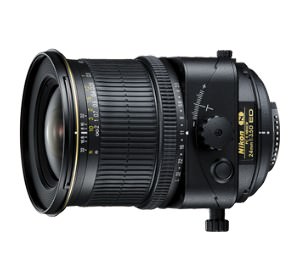-
 The “PC” in the name of the Nikon PC-E 24mm f/3.5D Lens refers to “Perspective Control,” or tilt-shifting capabilities, similar to old view cameras. For that reason, and a number of others, this lens was designed and built almost solely for the use of professional landscape and architectural photographers. It is not a lens for the casual photographer (unless he or she has deep pockets). Read about the best Nikon lenses for landscape photography on our website PhotographyTalk.com.
The “PC” in the name of the Nikon PC-E 24mm f/3.5D Lens refers to “Perspective Control,” or tilt-shifting capabilities, similar to old view cameras. For that reason, and a number of others, this lens was designed and built almost solely for the use of professional landscape and architectural photographers. It is not a lens for the casual photographer (unless he or she has deep pockets). Read about the best Nikon lenses for landscape photography on our website PhotographyTalk.com.
Want to see reviews from other photographers? Check them out here.
Other than its cost (see below), this Nikon tilt-shift lens is only fully functional on high-end Nikon bodies, such as the D3, D3S, D3X, the new D4 and D400, and presumably the yet-to-be-released D800. The first compatibility issue is that the physical configuration of the pop-up flash on lower-cost Nikon DSLRs will restrict the complete movement of the lens. The other problem with pairing the PC-E 24mm with older and inexpensive Nikon DSLRs is that you would have to select the depth-of-field button on the lens manually prior to releasing the shutter. The high-end Nikon bodies are capable of matching the aperture to the f-stop you would set on the aperture ring of this lens for the correct exposure.
You must be an in-demand landscape and/or architectural photographer to justify the cost of the lens and the thousands of dollars for a D3, D3S, etc. That being said, the functionality of the Nikon PC-E 24mm f/3.5D lens is definitely fascinating.
-
The design of the lens is also much different than most “standard” lenses, with its various knobs and locks that control the tilting movement. Since it is a pro-quality lens, it is extremely well built, with its rugged metal construction. Because of its specified use, the Nikon PC-E 24mm is a bit bigger and heavier than the typical 24mm f/1.4. The PC-E 24mm is 3.2” x 4.3” (82.5 x 108mm) and weighs 25.7 oz. (730g).
-
As mentioned above, this lens has an aperture ring, which is electronically connected to the diaphragm, as well as a separate depth-of-field preview button and a nice distance scale.
-
At this price, you would expect internal focusing, so the length of the lens remains constant, which means polarizing and neutral density filters can be used, since the front end doesn’t turn.
-
Because of the unusual nature of the PC-E 24mm, an auto-focus system doesn’t work with it, therefore, requiring manual focus.
-
Other than its four “perspective control” functions, this Nikon lens also turns 90 degrees in each direction from the default position.
-
The first of these functions is a shift above or below the horizontal plane by as much as .45” (11.5mm). The upward and downward shifts are “officially” known as “rise” and “fall.” The lens is shifted with a large knob that is joined to a worm drive device. Once in place, a smaller knob is used to lock it in position. This rise-and-fall functionality specifically corrects the problem of the converging lines of a tall building when photographed with a conventional lens. The PC-E 24mm will keep the vertical lines parallel even though the lens is only shifted a few millimeters.
-
The right-or-left shift function is the second movement and is most useful when shooting toward a reflective surface in which you and your camera may appear. By shifting the lens just slightly to the left or right, your reflection is removed, but your subject remains in the center of the frame. Landscape photographers use this feature when stitching together multiple images to create a panorama. It’s no longer necessary to turn the camera, but simply shoot separate images with a right and left shift, and then combine the two shots quite easily.
-
The third movement of the Nikon PC-E 24mm is to swing the lens to the right or left. Now, the plane of focus is no longer parallel to the plane of the sensor. This allows you to create an image with just a small portion of it in focus. You can also include an in-focus plane that is angled to the camera, without the need to select much of a lower stop.
-
Finally, the PC-E 24mm can be tilted toward the ground or the sky. This is the same movement as the swing, but at 90 degrees to that movement. Landscape photographers can use this technique to achieve almost perfect focus for objects closer to the camera and a distant scene or background.
-
Even with all these “trick” functions, the Nikon PC-E 24mm is extremely sharp at its widest aperture when used as a conventional lens. Moving it to the farthest positions of its four tilt-and-shift functions causes the edges to go soft, but that is to be expected.
-
If you’re a full-time professional landscape and/or architectural photographer who must create highly interesting and dramatic images for your clients, then the Nikon PC-E 24mm f/3.5D lens should be one of your lens choices. Click here to order one from Amazon for $1,979.00 at
Photo © 2012 Nikon Inc.
